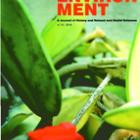Chakravarty-Kaul, Minoti. “Survival Strategies and the Environment: The Siwalik Forest Commons, 19th and 20th Centuries.” Global Environment 10 (2012): 116–37. Republished by the Environment & Society Portal, Multimedia Library. http://www.environmentandsociety.org/node/7573.
The history of the Siwalik forest commons counters the notion of a ‘tragedy of the commons’ as is commonly understood. It also corroborates their support as buffers and safety niches for pastoral peoples from uncertain political and harsh landscape of seven rivers and mountain chains of the Hindu Kush-Himalayas. Here we document those features of such traditional systems of shamilat van or forest commons in the Siwalik forests of the Punjab and analyse their contribution to the agro-ecosystems of both local agriculturalists and pastoralists to the north and south and the reciprocal system of rights, rules, and responsibilities devised by the users to ensure the survival of the forests. These resource-use systems also enabled communities to bear uncertainty and share risks. Indigenous management systems assumed a diversity of forms, reflecting the flexibility required to adapt to the dynamic environments in which these communities lived. It appears that this institutional flexibility allowed local management systems to endure through political upheavals and natural disasters. Thus it is that the collaborative management of the Siwalik forests successfully supported fragile ecosystems of the Upper Himalayas and relieved resource pressures on the plains below in the doabs or land lying between the rivers of Punjab.
— Text from The White Horse Press website
All rights reserved. Made available on the Environment & Society Portal for nonprofit educational purposes only, courtesy of Minoti Chakravarty-Kaul and XL edizioni.


